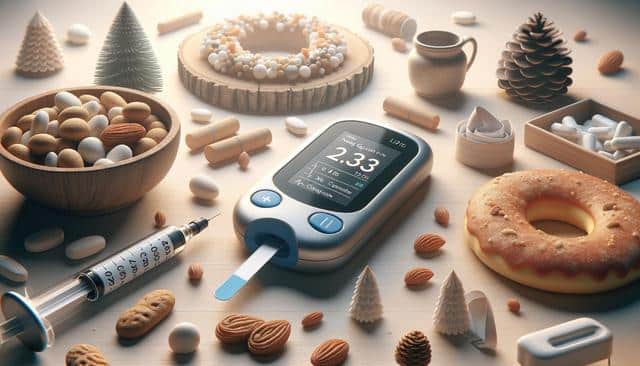A Complete Guide to Non-Invasive Glucose Monitoring Options
Learn about the latest non-invasive glucose monitoring options that make tracking blood sugar levels easier and more comfortable. This guide explores innovative technologies that eliminate the need for finger pricks, offering a more convenient approach to managing diabetes.

Understanding the Need for Non-Invasive Glucose Monitoring
For individuals managing diabetes, frequent blood sugar monitoring is essential. However, traditional methods like finger-prick tests can be painful, inconvenient, and discouraging over time. This has driven a growing interest in non-invasive glucose monitoring solutions, which offer a more seamless and less intrusive way to keep track of glucose levels. Non-invasive methods aim to measure glucose without penetrating the skin, reducing discomfort and improving compliance with daily monitoring routines. They also help minimize the risk of infection and skin irritation associated with repetitive skin punctures.
Monitoring blood sugar non-invasively is especially helpful for children, the elderly, and individuals with certain medical conditions that make traditional testing more difficult. By making the process less intimidating, these technologies can support better long-term health outcomes. As the market expands, it’s important for users to understand the types of technologies available, their benefits, and their limitations.
Technologies Behind Non-Invasive Glucose Monitoring
A variety of innovative technologies are currently being developed and refined to measure glucose without the need for blood samples. These solutions use different scientific principles to detect glucose levels through the skin or other bodily tissues. Some of the leading technologies include:
- Optical sensors: These use light-based technologies such as near-infrared (NIR), Raman spectroscopy, or mid-infrared to measure glucose concentrations through the skin.
- Transdermal sensors: These use small electric currents to draw glucose molecules from interstitial fluids through the skin, without causing discomfort.
- Electromagnetic sensors: Devices in this category monitor glucose levels by measuring changes in the dielectric properties of body tissues.
Each technology comes with its own set of advantages and limitations. For instance, optical methods can offer quick, real-time results, but may be affected by skin tone or external light conditions. Meanwhile, transdermal methods can provide consistent readings but may have limitations in accuracy compared to invasive methods.
Wearable Devices for Continuous Monitoring
Wearable glucose monitors are becoming increasingly popular due to their convenience and ease of use. These devices are designed to be worn on the body and provide continuous or periodic glucose readings without the need for finger pricks. Many of these wearables operate using optical or electromagnetic sensors, and some are designed to sync with smartphones or smartwatches for real-time data access. Common features of wearable monitors include:
- Compact and discreet design
- Long battery life and wireless charging options
- Smartphone notifications and health tracking integration
- Data storage for trend analysis over time
Although many wearable glucose monitors are still in development or undergoing regulatory approval, early models have shown promising results in terms of accuracy and user satisfaction. These devices can be particularly useful for people with busy lifestyles, offering an easier way to stay informed about blood sugar trends throughout the day.
Smartphone Integration and App-Based Monitoring
The integration of smartphone technology into glucose monitoring has further enhanced the convenience of managing diabetes. Many non-invasive monitoring devices now connect to mobile apps that provide users with a comprehensive view of their glucose data. These apps often feature:
- Real-time glucose readings and trend graphs
- Customizable alerts for high or low glucose levels
- Integration with fitness and nutrition tracking tools
- Secure data sharing with healthcare providers
App-based monitoring empowers users to make informed decisions about their diet, exercise, and medication. It also facilitates better communication with healthcare professionals, enabling more personalized treatment plans. As smartphone technology continues to evolve, we can expect even more advanced features, such as predictive analytics and AI-driven health recommendations, to become standard in glucose monitoring apps.
Challenges and Future Outlook
Despite significant progress, non-invasive glucose monitoring still faces a few challenges. Accuracy and reliability remain concerns, as non-invasive methods may not yet match the precision of traditional blood-based tests. Environmental factors, skin conditions, and individual physiology can also impact the performance of these devices. However, ongoing research and clinical trials are helping to refine the technology and address these barriers.
The future of non-invasive glucose monitoring looks promising. Researchers are working on multi-sensor platforms that combine different measurement methods to improve accuracy. Advances in nanotechnology, artificial intelligence, and biometric sensing are expected to contribute to more sophisticated and user-friendly monitoring systems. In the coming years, these innovations may lead to broader availability and more affordable options for individuals managing diabetes worldwide.